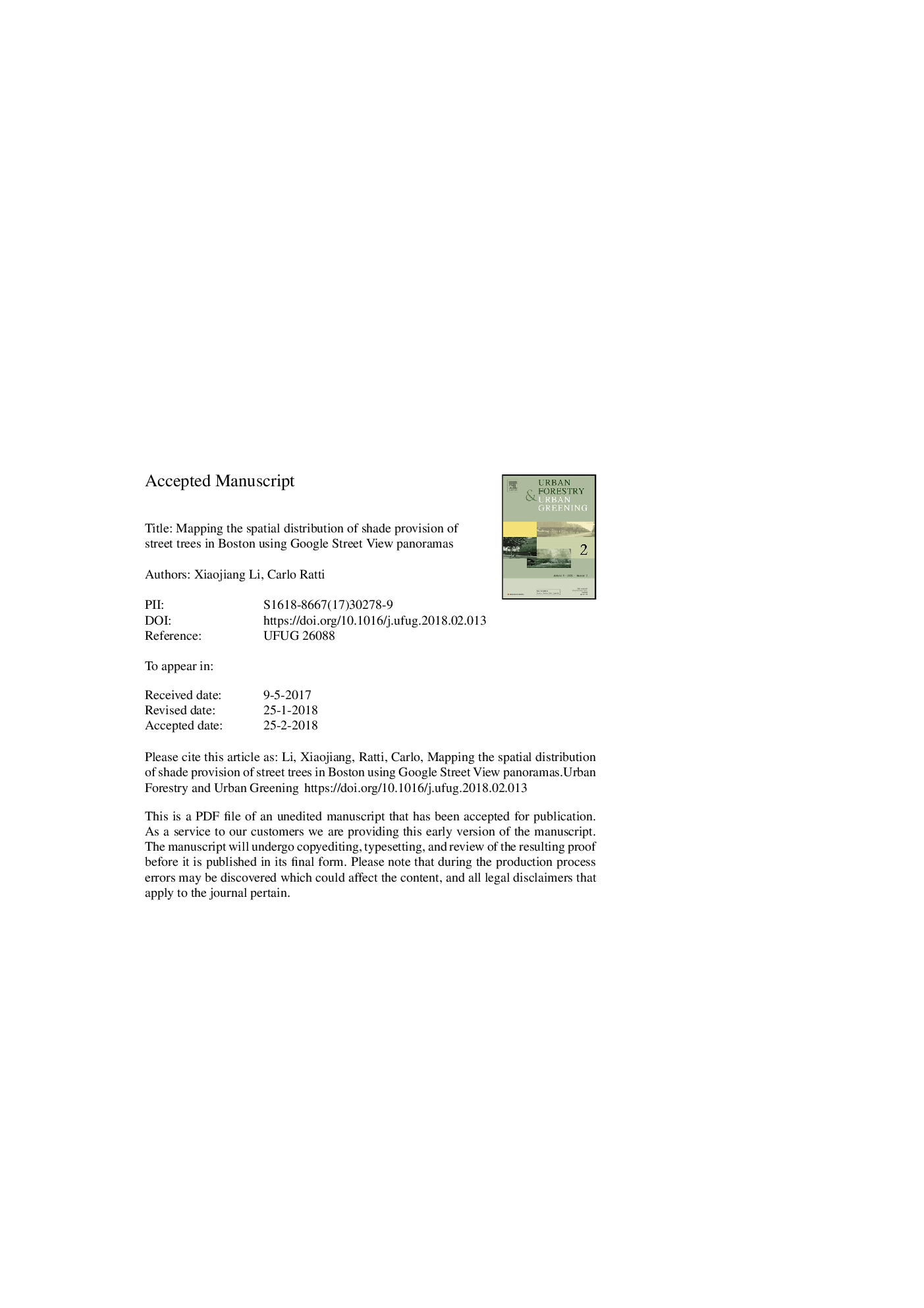| Article ID | Journal | Published Year | Pages | File Type |
|---|---|---|---|---|
| 6549262 | Urban Forestry & Urban Greening | 2018 | 31 Pages |
Abstract
Street trees provide shade and increase human thermal comfort during hot summer. In this study, we investigated the spatial distribution of shade provision of street trees in Boston, Massachusetts. The sky view factor (SVF), which influences the solar radiation to the ground and affects human thermal comfort, was used to indicate the contribution of street trees on shade provision. Google Street View (GSV) panoramas were used to calculate the photographic method based SVF (SVFP), with the consideration of all kinds of obstructions within street canyons. A building height model was used to calculate the simulation based SVF (SVFs), with consideration of obstruction of building blocks only. Considering the fact that street trees and building blocks are the two major obstructions of radiation within street canyons, therefore, the difference between the two SVF estimation results can be considered as the shade provision of street trees. The results show that street trees help to decrease the SVF by 24.61% in Boston, Massachusetts. The shading level varies spatially in the study area. Generally, the southwestern area has much higher shading level than the north and the east. We further explored the shading variation among different socioeconomic groups in the study area. Result shows that Hispanics tend to live in neighborhoods with lower shading level. This study can help to provide a reference for future urban greening projects for global climate change adaption.
Keywords
Related Topics
Life Sciences
Agricultural and Biological Sciences
Forestry
Authors
Xiaojiang Li, Carlo Ratti,
